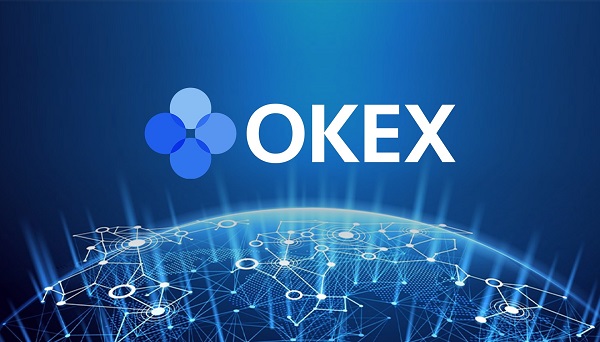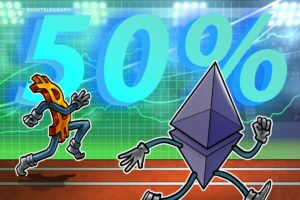How NFTs can boost fan engagement in the sports industry

Nonfungible tokens (NFTs) have grown a lot in popularity since the release of CryptoKitties in 2017, with the sector expected to move over $800 billion in the next two years.
Some of the most well-known use cases for NFTs are picture-for-proof projects such as the Bored Ape Yacht Club and play-to-earn gaming projects. NFTs have also attracted attention from the sports industry, with professional sports leagues setting up their own platforms for fans to engage with their favorite teams or players, but that will be discussed later in this story.
NFTs are unique and non-interchangeable pieces of code stored on the blockchain. These strings of alpha-numerical code can be linked to assets such as artwork or digital and physical goods. NFTs are created through a process known as minting, and creators can set a limit on the number of NFTs they want to mint, creating scarcity.
Scarcity is a phenomenon that has always applied to physical assets due to them being physically built with finite resources. However, scarcity has never existed with digital goods since they can be easily replicated. NFTs have changed this, and we are now seeing a growing collectibles market in the digital world.
How are NFTs used for fan engagement?
When it comes to sports, fans feel so strongly about their favorite player or teams that they interact with them in every way possible. Engagement ranges from watching or attending live games, buying merchandise or attending signing events. Fans want to get closer to their favorite teams and players, which presents sports teams and leagues with opportunities to generate additional revenue.
Sports leagues, in particular, have noticed the value of fan engagement and have gone on to create platforms where fans can buy, own and trade digital keepsakes. One well-known example is the National Basketball League’s NBA Top Shots NFT marketplace, where fans can buy, sell and trade basketball video clips. Video clips on the platform are known as NBA Top Shot moments, and each one shows a different highlight from a basketball match. The marketplace launched in 2020 as a joint venture between the NBA and Dapper Labs, the creators of CryptoKitties. It generated over $230 million in sales within a year of its launch.
Some video clips are sold in packs, similar to physical trading cards like Pokèmon and Yu-Gi-Oh. There is also an element of gamification with different rarity tiers, ranging from “common” to “legendary,” a standard system in role-playing games. The rarer video clips are more likely to fetch a higher price than the more common highlights, increasing their perceived value as a collectible.
The NBA isn’t alone when it comes to sports leagues building their own engagement platforms. National Football League and the National Hockey League are working on their own NFT platforms, while Major League Baseball has already released its NFT marketplace.
It’s not just sports leagues that have built fan engagement platforms — the concept is proving popular with non-sports league organizations coming into the space. For example, Fanzee is an upcoming platform that raised $2 million to build a marketplace and ecosystem where sports fans can complete challenges such as quizzes and games to increase their fan level and trade NFT collectibles.
Recent: Metaverse visionary Neal Stephenson is building a blockchain to uplift creators
Similar to NBA Top Shots, there’s an element of gamification. In this case, sports clubs can create interactive challenges such as quizzes based on previous matches to test how closely fans have followed the game. In addition, fans can earn experience points and NFTs based on their game interaction. Experience points raise their “fan level,” which is displayed on a leaderboard, with fans earning prizes based on their rank.
“Gamification is a great way to drive engagement. Having a fun and exciting platform experience helps draw people in. There’s got to be a story though, even if it’s a lighthearted one like GoblinTown.” Max Luck, ecosystem growth lead at the interoperability-focused Flare Network, told Cointelegraph, adding:
“NFTs are pretty unique in how they help to keep communities active and engaged — or ‘sticky,’ especially with secondary marketplaces springing up across different ecosystems and the potential for NFT use in various gaming metaverses. Also, a major opportunity for memes.”
How are fan engagement platforms changing the sports industry?
Fan engagement platforms are bringing real-world industries such as collectibles into the Web3 space. Nonfungible tokens are a great way to attract younger and more tech-savvy users by adding modern ways for fans to interact with their favorite teams and players while also creating additional revenue streams for sports leagues.
Luck agrees that NFTs are a great way to get young fans engaged with their favorite teams and players, “NFTs are kinda like marketing tools that carry the power to bring newcomers to the game. This is especially true among younger fans who have collectibles on their phones and can share their enthusiasm and experiences with friends at school or college.”
“Nowadays, tech can drive discovery, whereas previous generations might have watched sports with their families at home or in the stadium and developed their support there,” Luck continued, “The success of attracting newcomers would depend on how simple and easy platforms can make it for them to get hold of their first NFTs with accessible UI/UX — and how prohibitive the costs are.”
Digital assets could have a significant effect on how close sports fans are to their favorite teams if they are used correctly. It will be easier for fans to keep up with the teams and athletes they care about the most. Because of this, sports organizations have a chance to use digital assets to their advantage. It won’t be surprising if most sports leagues have their own NFT platforms where fans could interact with blockchain-based assets in the next few years.
However, the focus should be on the engagement of the fans instead of trying to earn a quick buck simply by selling tokens. By focusing on fan engagement, these platforms can see increased adoption since fans will be more likely to introduce new users to the platforms. This will also improve user retention since fans will be using these platforms for their personal enjoyment instead of trying to make money by flipping tokens or digital assets they have bought. If the bear market has taught us anything, speculative users always disappear when the market stops moving upward.
Félix Le Breton, digital revenue manager at French esports organization Team Vitality, told Cointelegraph, “NFTs can be a good way to attract young fans, as long as you stay away from the speculative aspect of it. Obviously the young generation are familiar with the principle of digital ownership and it is easy for them to get onboard.”
Recent: Decentralized storage providers power the Web3 economy, but adoption still underway
Platforms that take a user-first approach focusing on high engagement and user retention will see the most success when it comes to fan engagement platforms, in addition to improving user education around how NFTs will also help to bring the sports industry into the Web3 space. On average, 76% of avid sports fans worldwide are open to learning more about NFTs, so there is an excellent opportunity for organizations in the sports industry to introduce blockchain-based assets to their consumers.
NFTs can change the sports world by bringing offline activities into the online world. In the past, fans collected trading cards, signed T-shirts and footballs and traded printed-out pictures of their favorite players. As the world increasingly becomes digital, younger fans will find new ways to engage with their favorite teams and players through blockchain technology.
















